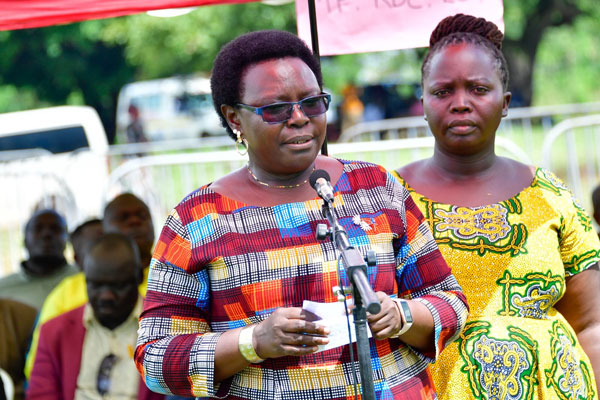
Gulu, Uganda | THE INDEPENDENT | The Office of the Prime Minister (OPM) has identified exit routes that will be used by noncompliant migrant cattle keepers commonly known as Balaalo while leaving North and Northeastern Uganda.
This comes just a week after President Museveni ordered the cattle keepers mainly from Western Uganda without fences and water sources on private and government land, to vacate the region within three weeks. President Museveni issued the order while in Okidi Parish in Atiak Sub-county, Amuru District where he met with local leaders and some of the cattle keepers for the first time in Northern Uganda.
The State Minister for Northern Uganda Rehabilitation Grace Freedom Kwiyucwiny in a November 7, 2023 letter to all Resident District Commissioners (RDCs) in Lango, West Nile, and Acholi Subregion seen by this reporter noted that five major routes have been identified for the exit of the noncompliant cattle keepers. According to the letter, in the Lango Sub-region, animals belonging to the defiant cattle keepers from the districts of Otuke, Kwania, and Apac must exit from the Otuke-Lira-Apac-Masindi Port route.
In the West Nile Sub-region, cattle from Arua, Madi Okollo, Terego, Moyo, and Pakwach must go through the Pakwach Bridge checkpoint, and the final recording conducted from the Karuma Bridge checkpoint. In the Acholi Sub-region, cattle from Nwoya and Amuru districts will go through the Karuma Bridge checkpoint while those from the districts of Lamwo, Pader, Kitgum, and Gulu must use the Kitgum-Acholi Bur-Gulu-Kamdini-Karuma route road through Layibi Checkpoint.
Meanwhile, animals from the districts of Obongi, Moyo, Yumbe, and Adjumani will use the Adjumani ferry to the Adjuamani-Atiak-Gulu-Kamdini-Karuma route through Alokolum checkpoint and final recording at Karuma Bridge checkpoint. The Minister in the letter directed all Resident District Commissioners in Lango, Acholi, and West Nile Sub-regions to supervise the implementation of the eviction with support and technical guidance of the district veterinary officers.
They have also been directed to constitute an implementation committee with whom they will be tasked to identify all cattle keepers in their respective areas and assess whether they have fences and water sources, identify those occupying government land, and identify holding grounds for those exiting. According to Kwiyucwyiny, the Resident District Commissioners together with the district veterinary officers must ensure that all animals leaving must be verified by local leaders for ownership, have movement permits, and the permitted animals be transported using designated routes.
The Implementation committee intends to start off the eviction of cattle keepers from government ranches in Lakang Sub-county in Amuru District, Got Apwoyo in Nwoya District, Aswa Ranch in Pader District, and Maruzi in Apac District. Stephen Odong Latek, the Amuru Resident District Commissioner told Uganda Radio Network earlier interview that the non-compliant cattle keepers have been given an opportunity to voluntarily evacuate their animals before being forced out.
Latek noted that the Amuru district alone has about 86 non-compliant cattle keepers who have no fences and water sources on the land they have hired or bought. He also revealed that the implementation committee in the district and sectoral committees have already met and drawn plans on how to execute the orders. Last week, the Fourth Infantry Division Spokesperson Maj Telesphor Turyamumanya noted that the army is ready to implement the eviction of the defiant cattle keepers once the eviction ultimatum expires.
Already, President Museveni has extended the eviction of the cattle keepers thrice between July and October ever since he issued Executive Order No. 3 in May this year. The latest eviction dateline was extended to November 15 from the initial October 20 to pave the way for verification of the cattle keepers. However, some political leaders in the Sub-region haven’t been happy with the extension of the eviction and instead accused the head of state of deliberately buying more time to keep the cattle keepers.
Reports from the implementation committee of the executive order headed by Prof. Jack Nyeko Pen-Mogi, the Acting Chairperson of Uganda Lands Commission issued in September this year reveal the largest concentration of migrant cattle keepers is in Amuru district (15.5 percent). Meanwhile, 13.6 percent of the cattle keepers are in the Gulu district while 9.1 percent are in Pader District.
****
URN
 The Independent Uganda: You get the Truth we Pay the Price
The Independent Uganda: You get the Truth we Pay the Price



Balaalo should follow the President’s directive.